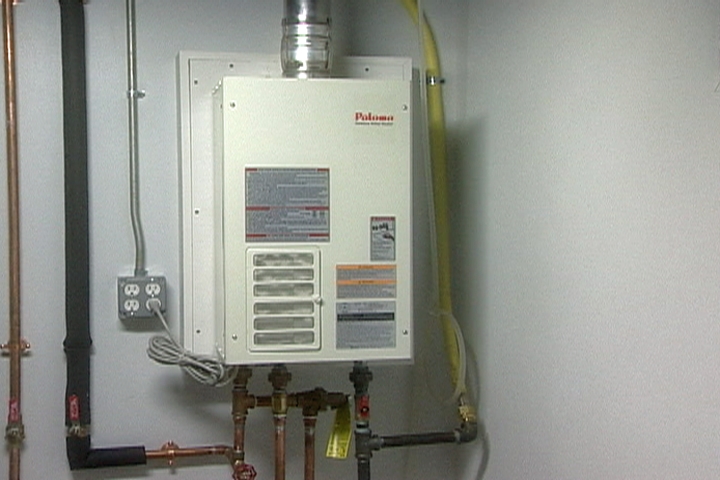Expert Advice for Caring for Your Home's Hot Water SystemEffective Strategies for Caring for Your Home's Hot Water System
Expert Advice for Caring for Your Home's Hot Water SystemEffective Strategies for Caring for Your Home's Hot Water System
Blog Article
Are you hunting for facts and techniques concerning How to Maintain a Hot Water Heater in a Few Simple Steps?

Hot water is crucial for daily comfort, whether it's for a revitalizing shower or washing meals. To guarantee your warm water system runs efficiently and lasts longer, routine upkeep is essential. This article gives functional ideas and insights on exactly how to preserve your home's hot water system to avoid disruptions and expensive repair services.
Intro
Keeping your home's warm water system might seem complicated, however with a couple of simple steps, you can ensure it operates efficiently for years to come. This overview covers every little thing from comprehending your warm water system to DIY maintenance tips and recognizing when to hire specialist assistance.
Relevance of Preserving Your Hot Water System
Routine upkeep not only expands the life-span of your hot water system but additionally ensures it operates successfully. Neglecting upkeep can cause reduced performance, higher power bills, and also early failing of the system.
Indicators Your Warm Water System Requirements Maintenance
Recognizing when your hot water system requires focus can protect against significant problems. Look out for signs such as irregular water temperature level, unusual noises from the heating system, or rusty water.
Understanding Your Hot Water System
Before diving into maintenance tasks, it's useful to understand the standard parts of your warm water system. Normally, this includes the water heater itself, pipelines, anode rods, and temperature controls.
Monthly Upkeep Tasks
Normal regular monthly checks can help catch small problems before they escalate.
Flushing the Water Heater
Flushing your water heater removes sediment build-up, boosting performance and extending its life.
Checking and Replacing Anode Rods
Anode rods prevent deterioration inside the container. Checking and replacing them when broken is crucial.
Examining and Adjusting Temperature Settings
Adjusting the temperature level setups guarantees optimal efficiency and security.
DIY Tips for Maintenance
You can execute a number of maintenance jobs on your own to keep your warm water system in top problem.
Looking for Leaks
Regularly evaluate pipelines and connections for leakages, as these can result in water damages and greater expenses.
Evaluating Pressure Alleviation Valves
Examining the pressure relief valve guarantees it operates properly and avoids excessive pressure build-up.
Shielding Pipes
Insulating warm water pipes reduces warmth loss and can conserve energy.
When to Call a Professional
While do it yourself upkeep is useful, some problems require specialist know-how.
Complicated Concerns Calling For Expert Help
Instances include significant leaks, electric troubles, or if your water heater is continually underperforming.
Routine Specialist Maintenance Advantages
Expert upkeep can include complete evaluations, tune-ups, and making sure compliance with security criteria.
Conclusion
Routine upkeep of your home's hot water system is necessary for efficiency, durability, and price savings. By complying with these ideas and understanding when to look for specialist aid, you can ensure a dependable supply of hot water without unexpected disruptions.
How to Maintain an Instant Hot Water Heater
Before tinkering with your hot water heater, make sure that it’s not powered on. You also have to turn off the main circuit breaker and shut off the main gas line to prevent accidents. Also turn off the water valves connected to your unit to prevent water from flowing into and out of the appliance. 2. When you’re done, you have to detach the purge valves’ caps. These look like the letter “T” and are situated on either side of the water valves. Doing so will release any pressure that has accumulated inside the valves while at the same time avoid hot water from shooting out and burning your skin. 3. When the purge valves’ caps are removed, you have to connect your hosing lines to the valves. Your unit should have come with three hoses but if it didn’t, you can purchase these things from any hardware or home repair shops. You can also get them from retail stores that sell water heating systems. Read the user’s manual and follow it to complete this task properly. When the hosing lines are connected, open the purge port’s valves. 4. You should never use harsh chemical cleaners or solutions when cleaning your unit. Make use of white vinegar instead. It should be undiluted and you’ll probably use about 2 gallons. 5. Now flush your water heater. This task should probably take about 40 minutes. We can’t give you specific directions for this because the procedure is carried out depending on the type, model and brand of your heater. With that being said, refer to the user’s manual. 6. When you’re done draining the unit, you have to turn off the purge port valves again. Remove the hosing lines that you earlier installed on each of the water valves. Put the valve caps (purge port) back in their respective places and be very careful so as not to damage the rubber discs that are found inside these caps. 7. Now that everything’s back in place, check your user’s manual again to find out how to reactivate your water heating system. 8. Once it is working, turn one of your hot water faucets on just to let air pass through the heater’s water supply pipes. Leave the tap on until water flows smoothly out of it. https://www.orrplumbing.com/blog/2014/september/how-to-maintain-an-instant-hot-water-heater/

Do you like reading about How to Maintain Your Water Heater & Prolong its Life? Create a comment down the page. We would be happy to hear your opinions about this blog. Hoping that you visit us again before long. Feel free to take the time to distribute this content if you enjoyed reading it. Thanks for taking the time to read it.
Call Us Today Report this page